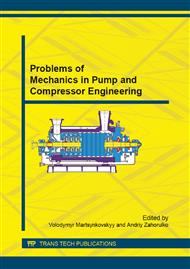p.248
p.255
p.267
p.277
p.283
p.288
p.294
p.301
p.311
Sealing of Pipelines Flange Connections in Conditions of Fasteners Tightening Torque Reducing
Abstract:
Flanged connections are widely used in pipelines of various technical systems. Task of reducing the consumption of materials pipelines , ensuring their long-term tightness is highly relevant for shipbuilding , aviation and space technology and other mashinebuilding. In this paper, the task of deliberately reducing torque fasteners flange connection at build pipelines to ensure the initial tightness of the connection , reducing the weight of the pipeline , the alignment of the stress- strain state of the compound and determining the residual torque fasteners, providing connections for leaks. With decreasing torque fasteners ( intentional or natural ) will be sealed flanged if the remaining torque is sufficient to compensate for the pressure in the pipeline and prevent shear movement of the flange and gasket relative to each other . Found that the flange connection remains sealed with natural and deliberate reduction torque fasteners to 75-80 % compared to the initial .Sealing flange connections using technology and standard fastenings to reduce their weight by 10-50 %, and the replacement of flanges and pipe material - a whole lot of pipelines at 30-65 %.
Info:
Periodical:
Pages:
283-287
Citation:
Online since:
September 2014
Authors:
Keywords:
Price:
Сopyright:
© 2014 Trans Tech Publications Ltd. All Rights Reserved
Share:
Citation:


